| |
|
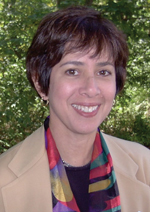 WASHINGTON, D.C.—The passionate defense of human rights and of Israel, as well as the love for and appreciation of the United States have grown out of his experiences. Tom Lantos is Hungarian by birth; Holocaust survivor by luck, nerve and Providence; and American by choice. His career, he said, is an “only in America” story. WASHINGTON, D.C.—The passionate defense of human rights and of Israel, as well as the love for and appreciation of the United States have grown out of his experiences. Tom Lantos is Hungarian by birth; Holocaust survivor by luck, nerve and Providence; and American by choice. His career, he said, is an “only in America” story.
His announced retirement to fight esophageal cancer will leave a hole in the House of Representatives. During his tenure, Americans always knew someone serious had the Human Rights portfolio and would push the administration – any administration – to do better and go farther for people in harm’s way. He cared about the people of Rwanda, Bosnia, Darfur and Iraq. And always Israel. One of his finest moments, in our view, was battling
Shoshana Bryen
the anti-Israel and anti-American forces gathering for the first Durban “Human Rights” conference (2001) and helping to ensure that Secretary Powell recalled the American delegation with strong words of protest. An American decision NOT to fund or participate in the upcoming Durban II farce would be a nice going-away present for Mr. Lantos, not to mention good policy.
Another void will open with Mr. Lantos’s departure; he was the only Holocaust survivor ever to sit in the House and he served in the era of America’s World War II veterans. Liberators and liberated, they had direct experience with the worst of man’s nature and they share an understanding of the fundamental enemies of mankind.
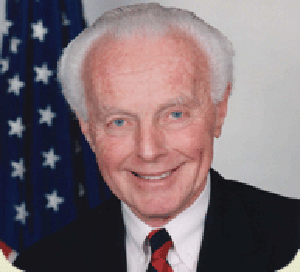 Not everything he or they did has been perfect; not by a very long shot. But they Not everything he or they did has been perfect; not by a very long shot. But they
faced Hitler, the Nazi war machine, death camps and death marches. They returned profoundly appreciative of the greatness of our country and the gifts it had to offer veterans and survivors. Now their era in government and their physical presence as a factor in our lives is ending. There will never be another Holocaust survivor elected to office, nor another WWII vet.
Mr. Lantos was an early supporter of the overthrow of Saddam. He had watched the attack on Israel in 1991, but he also knew what the brutalization of a country under perverted leadership meant for the
Iraqi people. Saddam’s gassing of the Kurds and the massacres of Shiites in the south had antecedents Mr. Lantos knew only too well, and he believed American soldiers would liberate the Iraqi people as they did the remnants in Europe. He was right then. His conversion to an opponent of the war, we assume, has to do with mistakes he believes the United States made in the execution of the war and its aftermath, not a lessening of his respect and admiration for our troops.
As Mr. Lantos’s generation retires, hundreds of thousands of Iraq and Afghanistan vets have begun to return to this country and will assuming positions of leadership – elected and otherwise – in the manner of returning WWII vets. Their experiences with human nature, human evil and human rights will guide them, too.
Mr. Lantos is leaving very large shoes to fill as a defender of the rights of mankind. The rising generation, military and non-military, would do well to learn from his story and his legacy of service to his adopted country, our country.





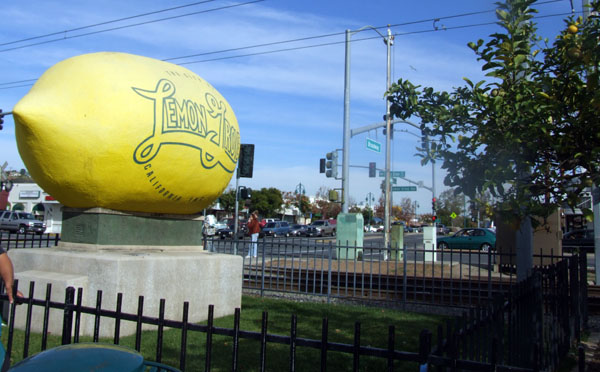
THE JEWISH CITIZEN 'A Jewish Story Everywhere'
Lemon Grove: For Jews, there are some sour facts and some sweet memories
By Donald H. Harrison
 LEMON GROVE, California—Surfing the net to gather information about the Jewish experience in this small bedroom city close to downtown San Diego yields discouraging results. There’s plenty of material about white supremacists like Alex Curtis, who after being arrested at his parents’ home here, was sent to prison for multiple acts of anti-Semitic vandalism. One also can find material from missionary organizations that would like to convert Jews. Two opposite currents seem to be at work: there are those who want to put an end to Judaism through annihilation, and there are those who’d LEMON GROVE, California—Surfing the net to gather information about the Jewish experience in this small bedroom city close to downtown San Diego yields discouraging results. There’s plenty of material about white supremacists like Alex Curtis, who after being arrested at his parents’ home here, was sent to prison for multiple acts of anti-Semitic vandalism. One also can find material from missionary organizations that would like to convert Jews. Two opposite currents seem to be at work: there are those who want to put an end to Judaism through annihilation, and there are those who’d
Donald H. Harrison
achieve the same result through religious conversion.
However, such findings, I suggest, are less an indication of deficiency on the part of Lemon Gove and more an indictment of the Internet. What makes news, especially news that lodges permanently on the web, often is a function of conflict, rather than of concord. Controversy makes news, harmony often doesn’t. Maybe this story will bring some balance.
To obtain a picture of Lemon Grove, or any locality that one might wish to research, one needs to go for a personal visit, to take advantage of resources that are not on the web. I began my quest at the San Diego County library branch in Lemon Grove, which keeps on its shelf, A History of Lemon Grove, compiled by the Lemon Grove Historical Society, an organization that makes its home in a lemon-colored former parsonage. The history, I knew, would provide a basic framework for further research.
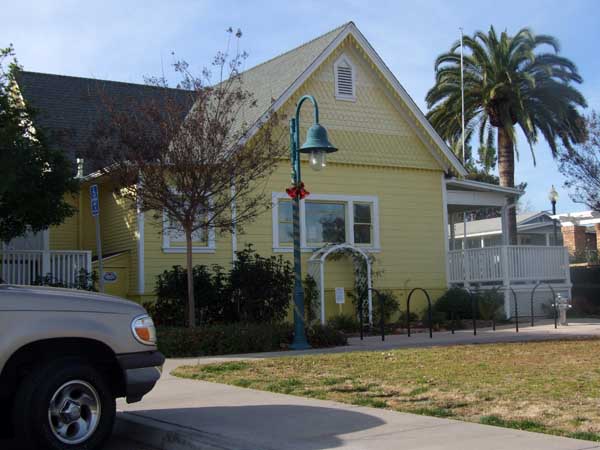
The first settler in the area was Robert Allison who purchased 4,283 acres in 1868 from the Arguello family for a sheep ranch. A son, Joseph, subdivided the area in 1892. Maps indicate that Lemon Grove at the time was spelled as one name: Lemongrove.
In the same year, Sherwin Allen opened the first general store. In 1893, his establishment became home to the city’s first post office. A previous story, about Lakeside, in our series illustrating our slogan that “there’s a Jewish story everywhere” quoted a Journal of San Diego History article by Edgar Klauber, a member of a pioneer Jewish family, about trips he made to Lakeside via Lemon Grove to sell Klauber-Wangenheim Company merchandise to general stores along the route. There is every reason to believe that Klauber called on Allen’s store. Further evidence of a Klauber family connection to Lemon Grove comes in the San Diego Historical Society’s online profile of Alice Klauber, a sister of Edgar, who died in Lemon Grove in 1950. She had been an important force in San Diego’s art scene , helping to found the city’s Fine Arts Society in 1926. That was a forerunner of the San Diego Museum of Art, located today in Balboa Park.
In 1928, the 7- foot by 14-foot lemon—which is Lemon Grove’s best-known landmark—made its debut in an Independence Day parade in San Diego. Today, it is permanently mounted at the corner of Broadway and Lemon Grove Avenue. Designed by the architect Alberto Treganza, the 35,000-pound lemon was constructed by Edmund Dunn, who more typically built homes atop Mount Helix. The lemon was emblazoned with the slogan: “Lemon Grove: Best Climate on Earth.” Streets in Lemon Grove bespeak the transformation of the area’s economy from sheep to citrus and horticulture. Among them are Acacia Street, Citronella Avenue, Citrus Street, Cypress Avenue, Grove Street, Lemon Avenue, Lemon Grove Avenue, and Olive Street.
In 1931, Jerome T. Green, principal of Lemon Grove Grammar School, barred Mexican-American children from attending the school, directing them instead to go to nearby classrooms reserved by the school board for students from Spanish-speaking families. Rather than submit to discrimination and segregation, Mexican-American families filed suit against the school board in state court. They won their case, notwithstanding the school board’s protestations that it simply was trying to speed up the acculturation process by having special classes. The children returned to regular class, the desegregation victory preceding the historic Brown vs. The Board of Education decision by the U.S. Supreme Court by over two decades.
The school segregation case since has become known as the “Lemon Grove Incident” and civic authorities in the 3 ¾ square-mile city are far enough removed from it in time that they now celebrate the forerunner role of their city’s Mexican-American community in establishing civil rights.
About one block southwest of the lemon is the Grove Pastry Shop, located in the building that once was Lemon Grove’s original general store. On the south wall of the structure, three of five planned murals by Jane LaValle and Katy Strzelecki portray the history of the greater San Diego County area: A Kumeyaay Indian village, circa 100 C.E.; The Spanish Conquest and Missionary periods in the 16th through 18th centuries; and the Spanish/ Mexican Rancheros and American Statehood of the 19th century. Still to come, according to a sign on the outside of the premises, are panels depicting the rise of the Citrus Groves in the 19th and 20th Centuries and Modern Lemon grove between 1950 and the present.
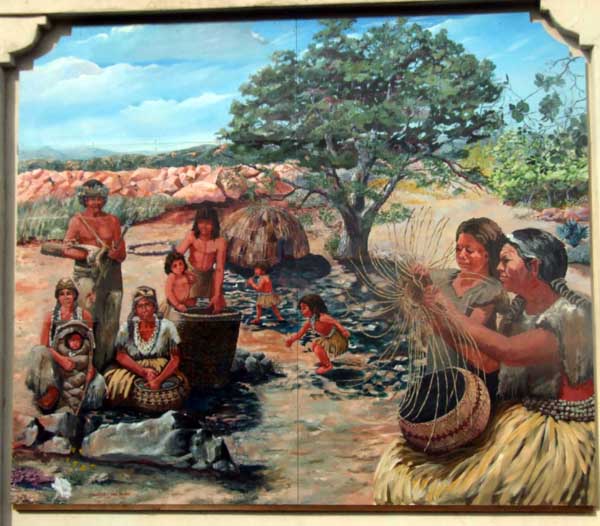
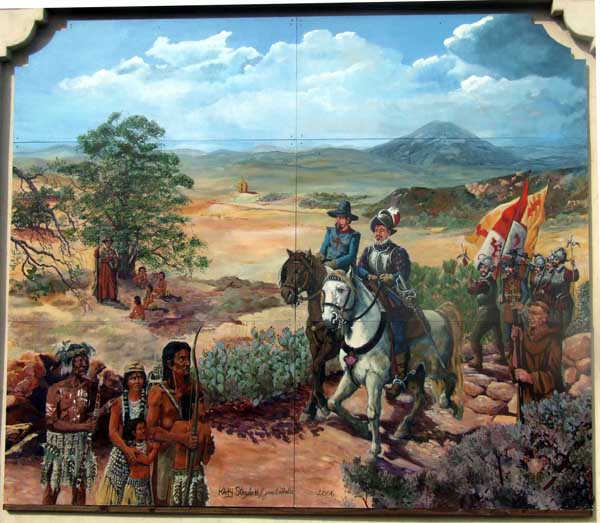
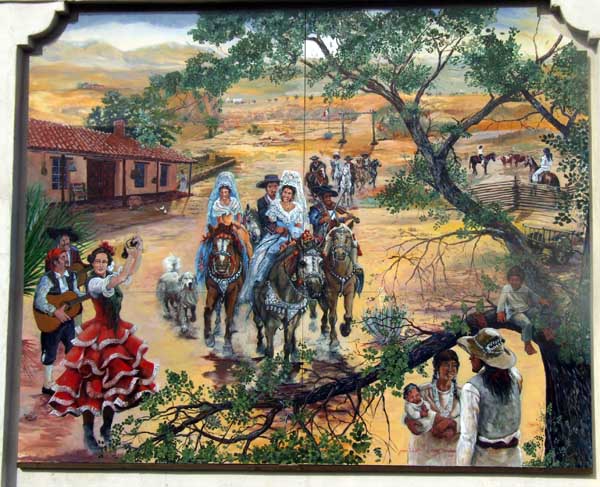
.
Lemon Grove was incorporated in 1977 as a city in its own right, with a City Council consisting of a mayor and four City Council members. The city is served by the San Diego Trolley, with a stop across the street to the north of the lemon. The Lemon Grove Chamber of Commerce occupies a historic building at the trolley stop.
A number of Jewish families lived in Lemon Grove during the time frame that will be depicted in the fifth mural, among them that of Steve Weening. Weening, whose wife Leslie is the long time executive assistant at the United Jewish Federation, said his parents Samuel and Ethel Weening purchased a three-bedroom, hardwood-floor home in 1959 in Lemon Grove that was located within walking distance of a now disappeared landmark, Miller’s Dairy. “I can remember making a couple loaves of bread at my house,” said Weening, “and then running down to Miller’s to get the butter.” After a while the dairy people offered to trade with Weening, a loaf of bread for a pound of butter. Housing now occupies the dairy site.
The Weening home was located on a large lot, which boasted both a tangerine tree and a lemon tree. Given the name of the city, Weening said he expected the lemons to be far superior to the ones grown at his previous home in East San Diego, which were “as big as grapefruits.” Alas, they turned out to be of the punier variety.
Still, the lemons were big enough for boyhood mischief-making. Weening said one of his childhood memories was when he, his brother Dave, and his cousin Danny would stick firecrackers into lemons and throw them. On one occasion, a lemon blew up in one of the boys’ hands, teaching a valuable lesson
Weening’s uncle Jack Norr was a member of the Masons, “which meant that my aunt joined the Eastern Star,” Weening recalled. “She got my mother involved and when it was their turn to bring the dessert, instead of hassling it, they decided to bring it from the bakery. This one had a whipped cream topping and a raspberry fill. People started asking my mother and aunt for the recipe, and my aunt piped up that she couldn’t give it out because it was a family recipe. So for the longest time, everyone thought this particular cake was my aunt’s and mother’s recipe, and they laughingly named it ‘Grandma’s cake.”
Another bygone landmark in Lemon Grove was the Ace Drive-In Theatre, which Weening recalled charged only $1 per carload. “My cousin would call me, and say ‘I will make the popcorn, if you have the gas in your car.’ I would pick her up and another girl, and then so and so, and by the time I got finished I had 12 girls crammed with me into my ’58 Oldsmobile, all sitting on top of each other. Once they got to the movie, they would break off and find their boy friends. That was fine with me, but I made one rule: ‘I brought you, I take you home.’ One girl thought I was too strict, and went off anyway. I stopped on the way home at her parents’ and told them what had happened.” The girls’ parents evidently gave her quite a talking to when she finally did get home.
Weening lived in Lemon Grove until 1979 when he and Leslie were married.
Keith Goldman, a contemporary of Weening’s, said although he did not reside in Lemon Grove, “I spent a considerable amount of time there with a girlfriend; those were the days when the Ace Drive-In meant a lot to teenage boys…. Life was altogether different in those days. We would cruise Oscar’s, the hamburger joint which was popular then. We didn’t use drugs and were not often caught with alcohol, either, but maybe guilty of drinking too much root beer at A&W, another hangout.”
Over the years, Jewish families have been involved in Lemon Grove’s business community, even while residing elsewhere in the county. For many years, Norman Weinstein of Chula Vista owned the Family Bargain Center chain that operated more than 100 outlets, including Lemon Grove Center just to the east of the big lemon. Norman Greene, a San Diegan who owns the center today, remembers Weinstein once telling him that the Lemon Grove outlet was the eighth largest producer for the chain.
Greene, who once co-published the San Diego Jewish Press-Heritage with me, continues the tradition of a Jewish business presence in Lemon Grove. The center’s tenants include three national chains: Starbucks, H&R Block, and California Budget Finance, along with the Korean-owned Toda Moda Fashion Outlet, a shoemaker, and a manicurist.
After purchasing the property with 15,000 square feet of rentable space in 1987, Greene said he embarked upon a program of improvements with the encouragement of the City of Lemon Grove. Store signs were made to conform with the city’s uniform signage code, building exteriors were replastered, a billboard was torn down, wires were undergrounded. A new sidewalk was installed, the parking lot was redone, and the stores were air conditioned and re-roofed.
Additionally, said Greene, blooming shrubs were installed at the corner and trees were planted.
“Lemon trees?” I asked innocently.
“Palm trees,” he said, “which I thought would grow a lot taller and skinnier than they did.”

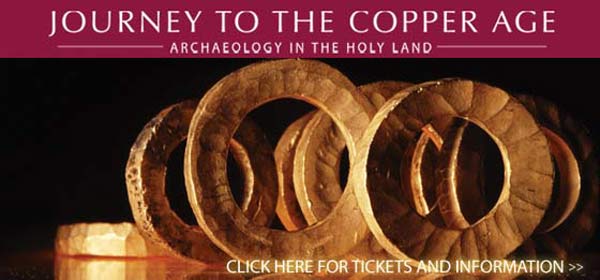




SAN DIEGO JEWISH WORLD THE WEEK IN REVIEW
Eitan Frysh in San Diego: Frum Jewish director stays out of theatres on Shabbat, chooses only tasteful plays
Peter Garas in Canberra: 25,000 salmon free for the taking has his mouth just watering for fresh bagels
Donald H. Harrison in San Diego: Movie probes after-effects of the Holocaust: Dear Mr. Waldman will screen twice at San Diego Jewish Film Festival
Gabi Maio in San Diego: Teen recounts she was chosen for summer leadership trip to Israel
Dov Burt Levy in Salem, Massachusetts: Readers share opinions on whether we should teach children about the Shoah
Ira Sharkansky in Jerusalem: What about Israeli-on-Israeli violence?
Dorothea Shefer-Vanson in Mevasseret Zion, Israel: A glorious chorus brought in New Year
Tuesday, January 1, 2008 (v2, no. 1)
Peter Garas in Canberra, Australia: Forget the tail of the dog that bit you; now it's the breeze from the air that you heated
Donald H. Harrison in Escondido, California: Dinner and a movie: two fine inter-cultural opportunities
J. Zel Lurie in Delray Beach, Florida: Har Homa once again the monkey wrench in the Middle East peace process
Lynne Thrope in San Diego: Fine restaurants to offer special prix fixe menus during San Diego's 'restaurant week'
MONDAY, DECEMBER 31
Shoshana Bryen in Washington, D.C.: Turkey and U.S. join to fight Kurdish terror
Donald H. Harrison in Los Angeles: Animals stand in for people at Skirball's imaginative, interactive Noah's Ark exhibit
Sheila Orysiek in San Diego: I am resolving to be more resolute
< BACK TO TOP
|
|

